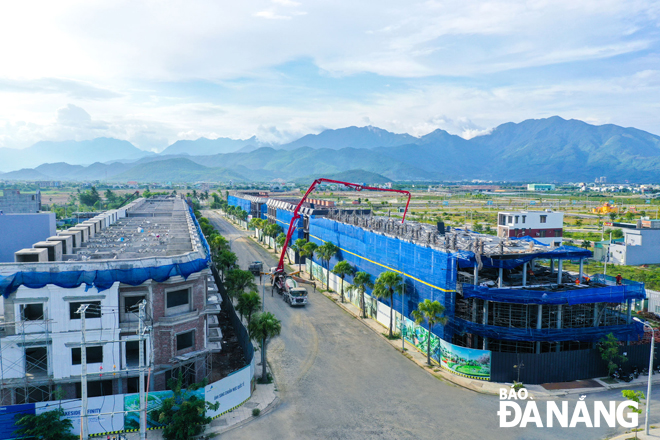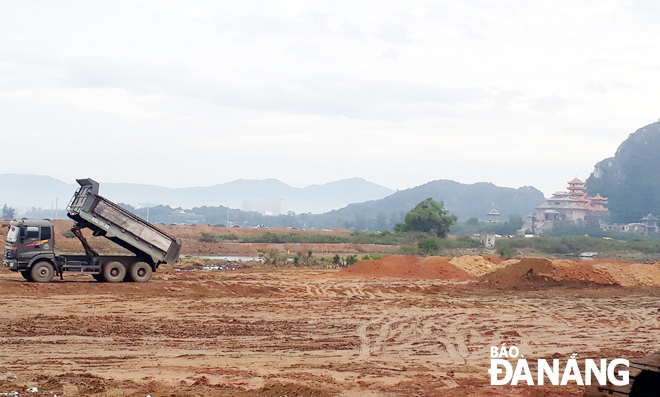Banks tightening real estate loans, real demand for real estate bouncing back
Since mid-2019, commercial banks across the country have taken the initiative to tighten lending for real estate loans, and increase their risk weights of commercial real estate, due to concerns about bad debts amid land fever.
 |
| Shophouses of the Dat Xanh Mien Trung Company-developed Lakeside Infinity Project in Lien Chieu District are under construction |
Recently, the State Bank of Viet Nam (SBV) has released Circular No 22/2019 regulating safety proportions in banking activities at domestic commercial banks and foreign banks branches, including a road map for the 2020-2022 period.
In particular, from 1 January 2020 to 30 September 2020, SBV will allow commercial banks to lend a maximum rate of 40% of short-term mobilisation funds for mid- and long-term loans, instead of 60% in the past. The rate will then be reduced to 30% starting from early October 2022.
Apart from reducing the rate of short-term funds used to offer mid- and long-term loans, the central bank has increased the risk weights of loans for the real estate sector from 150% to 200%.
 |
| A new urban area project is underway in Ngu Hanh Son District |
In the fourth quarter of this year, the real estate market, especially the residential land segment, in the southern side of Da Nang, including Cam Le and Ngu Hanh Son districts, and such nearby areas as Dien Nam, Dien Ngoc and Quang Nam, has been found gloomy. The land prices there have fallen by between 20% and 30%, equivalent to about 400 million VND per 100m2 land lot.
At the Ngu Hanh Son District-located Nam Viet A urban area, only 42 million VND/m2 has been set for land lots on 7.5m-wide streets instead of 42 million VND/m2 in previous months. Meanwhile, 57-58 million VND/m2 has been set for land lots on 11.5m-wide streets instead of 60 million VND/m2.
According to a spokesperson for the company CBRE Viet Nam Global Research and Consulting, the tightening of loans for real estate sector has made both domestic and foreign investors focus on developing the residential land segment to satisfy the ‘real’ housing demand of residents instead of rushing to develop a mass of real estate projects.
From 2020 onwards, commercial banks will be strongly cautious about managing risk weights. Therefore, real estate firms and investors will be forced to seek new sources of capital such as investment funds, insurance companies and stock market for their long-term development.
By TRIEU TUNG - Translated by MAI DUNG